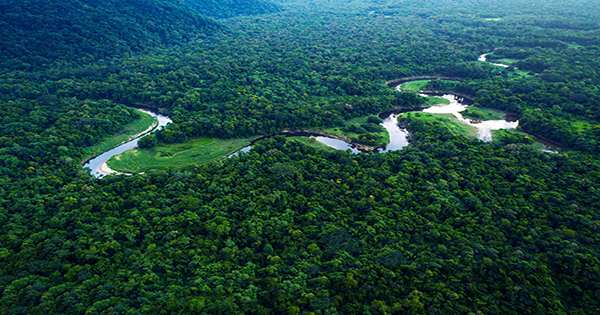The Amazon rainforest is often described as a natural base against climate change, but a new-first type of study that follows decades of human activity, including deforestation and harmful changes in land use, argues that rainfall is probably warming the planet more than cooling it. Much of the debate over the health of the Amazon rainforest and the health of climate change has previously revolved around the carbon cycle: trees absorb atmospheric carbon dioxide, store carbon in their biomass, then release carbon when they rot or burn.
This carbon released back into the atmosphere in the form of carbon dioxide, a greenhouse gas that traps heat in our atmosphere and contributes to climate change. Although some parts of the Amazon now produce more carbon than they absorb, largely due to deforestation and changes in land use, the Rain Forest absorbs more carbon than it fully disclosed – for now, at least.
However, the overall picture seems to be much more complex than previously understood. In a study published in Frontiers of Forests and Global Change, researchers looked at all the greenhouse gases that affect the Amazon, such as methane and nitrous oxide, and worked on their impact on global change. Once these other factors taken into account, it seems that the net warming effects created in the Amazon Basin now outweigh the cooling effects provided. Among the issues the new study looks at is the role of methane (CH4), a very powerful greenhouse gas that has caused the effects of intense warming in the Earth’s atmosphere. Like carbon, it is part of a natural cycle, pumping both soil and sediment and absorbing methane.
About 3.5 percent of global methane emissions come from the Amazon tree. New studies predict increased flooding and increased release of methane because of dam construction. Cattle herds, one of the main drivers of deforestation in the basin, also pump large amounts of methane. The situation is similar with nitrous oxide, another greenhouse gas, both determined and produced by individual soils. New research, however, argues that as deforestation and climate change cause more land degradation, lands are now emitting more nitrous oxide than they are now.
After all, the researchers also consider how burning forests and land is exacerbating climate change by releasing black glass into the atmosphere, which helps absorb sunlight and increase warmth. In recent years, the plight of the Amazon Rain Forest has become increasingly apparent, as the problem seems much deeper and more complex than many scientists understand.
“CO2 is not a lone actor. When you consider the full cast of the other characters, Amazon’s view is that the effects of human activity will be worse than we realize, “said Patrick Megonigal, associate director of the Smithsonian Environmental Research Center, who was not directly involved.














